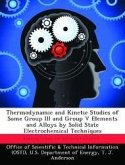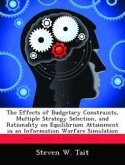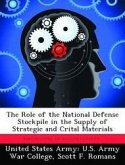Hydrocodes are valuable tools in the modeling of shock wave propagation through solids due to high speed impact phenomena. To model high speed impacts, hydrocodes use the conservation equations of mass, momentum and energy, constitutive equations to model the materials response and equations of state (EOS). CTH is a hydrocode built with the ability to use multiple EOSs, including the semi-emperical Mie-Gruneisen EOS and tabular Sesame EOS. Modeling high speed impacts necessitates modeling the non-equilibrium thermodynamic states caused by these impacts. A discussion of the non-equilibrium thermodynamics that may be applied to the region directly behind a shock wave is presented, including details of recent attempts to model non-equilibrium impact phenomena in solids. Also, in order to better determine the applicability of the Mie-Gruneisen EOS and the Sesame EOS in situations that include non-equilibrium thermodynamics, the high speed, uniaxial impacts between two iron bars are modeled in CTH. These impacts are modeled using the Mie-Gruneisen EOS, Sesame EOS and a two state EOS called PTRAN.
Hinweis: Dieser Artikel kann nur an eine deutsche Lieferadresse ausgeliefert werden.
Hinweis: Dieser Artikel kann nur an eine deutsche Lieferadresse ausgeliefert werden.








